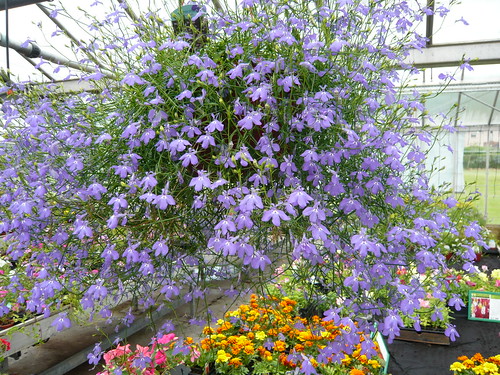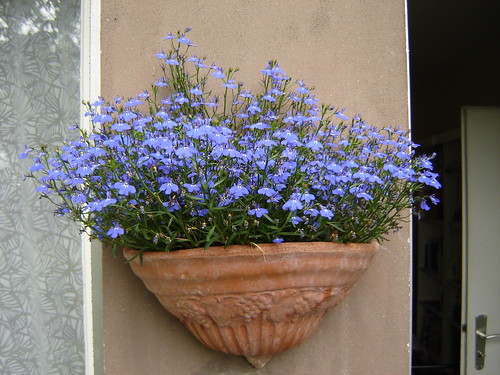Tips for Growing Annual Lobelia
Fine seed slow to bulk up – our tip is to buy kinder pots or germinated seedlings unless you want a lot of plants.
Lobelia annuals can be excellent fun to grow. Given the right conditions they can grow quickly after a slow start and  flower from June until late autumn.
The blue or purple Lobelia are often coupled with Alyssum for the edge of borders to give a cottage garden effect.

Choose the right variety. If you want to grow colourful Lobelia try a specific variety such as
- Lobelia Crystal Palace a compact plant with 5p sized blue flowers on dark leaves. Blue Moon is earlier to start flowering.
- The Fountain series of Lobelia produce trailing plants: Lilac fountain or White Fountain will look good in dry stone walls or in containers and baskets.
Where to Grow. Lobelia are accommodating plants that will grow in most situations. They are great in Rockeries or the trailing habit looks good in a hanging basket. Window boxes or planters can bring the flowers to eye-level.
They can also be used to frame other annuals using the mound of Lobelia as neat edging.
Blue Borders. Plant your Lobelia ‘Sapphire’ or ‘Blue Stone’ with a mix of other blue flowers such as ‘Blue Daddy’ Petunias and the powder blue Ageratum. Highlight the blue with a white Cosmos or white Busy Lizzy.
Feeding. Lobelia enjoy a moist well fed soil but do not need extra fertiliser. If they are flagging after the first flush of flowers trim them down a bit to encourage repeat flowering.
Watering. Lobelia don’t like drying out and they can soon start to wither in hot weather. Give them a good watering once a week rather than little bits at a time.
Starting from Seed. Seeds are very fine and are sown thinly. Start in early spring. When big enough you can plant out in clumps rather than individually, hardening off if necessary.
Starting from Seedlings or Plug Plants. Buy before they start flowering with stocky stems and rich green leaves. Avoid leggy plants or ones with yellowing or curly leaves.
Do not eat – all parts of the plant can be harmful if eaten in quantity.

Useful Links
Thompson Morgan Seeds to consider buying.

